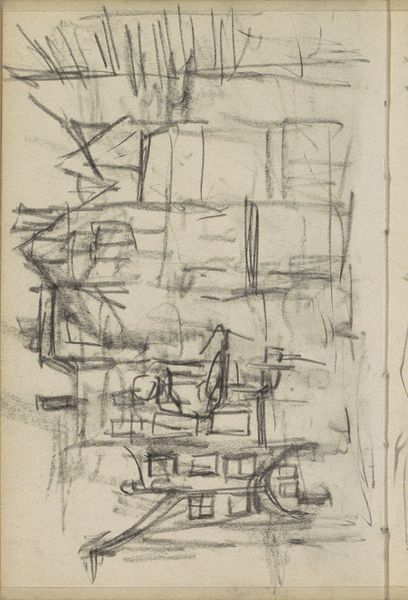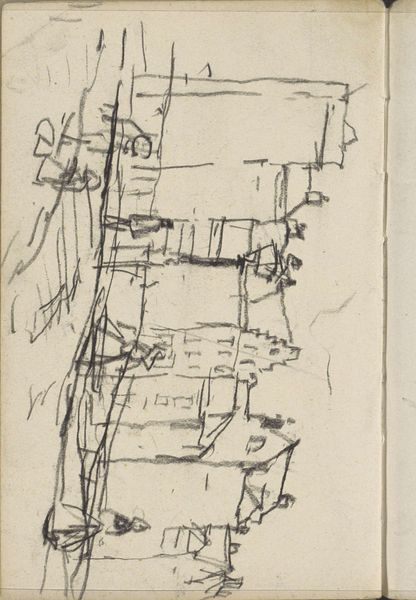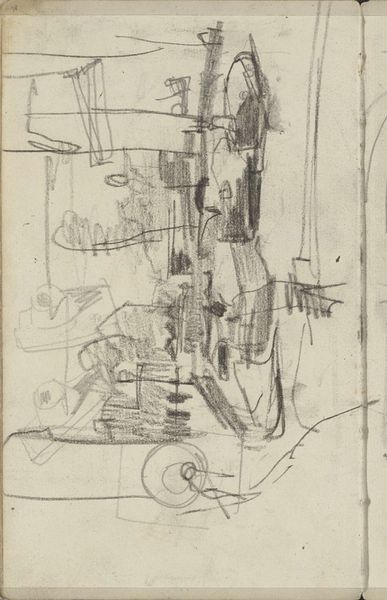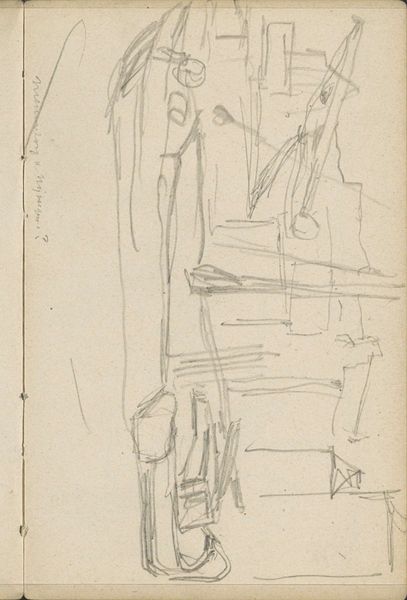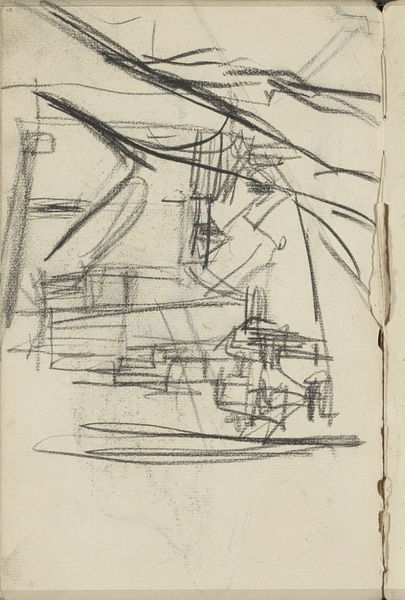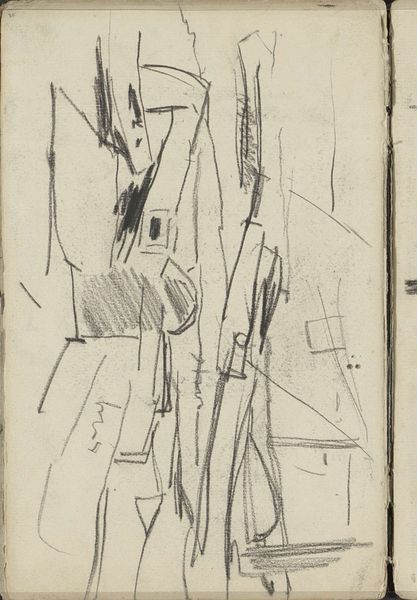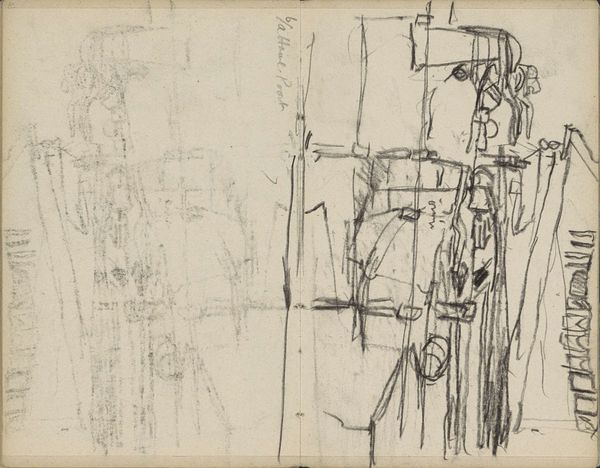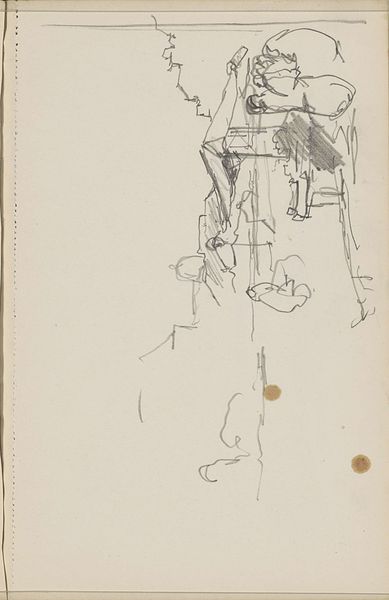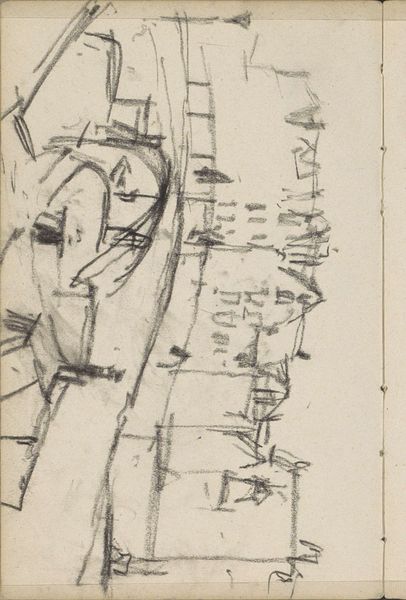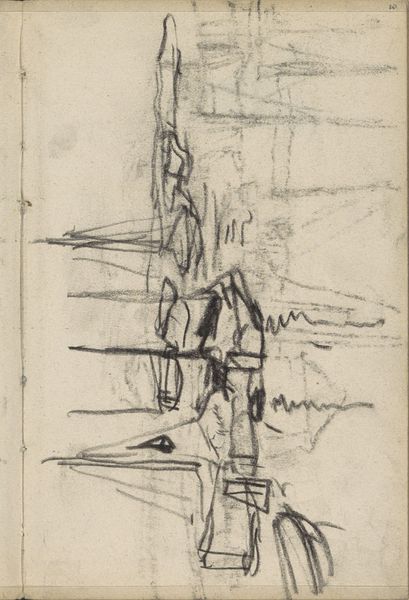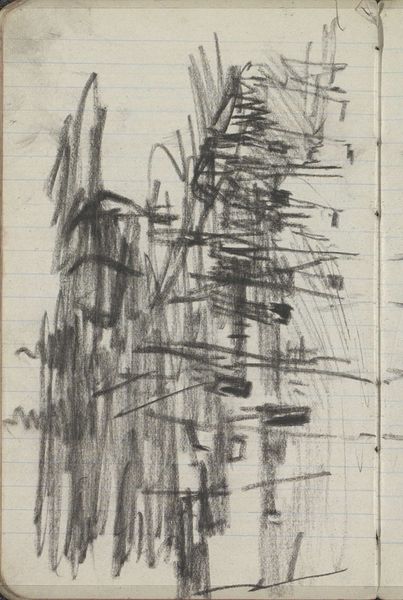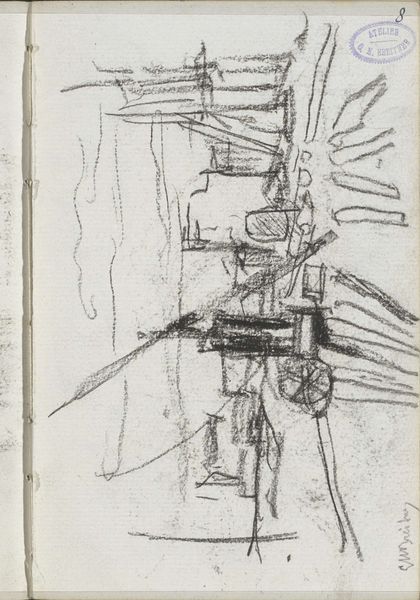
Brug over de Prinsengracht te Amsterdam, ter hoogte van de Reestraat 1891
0:00
0:00
Copyright: Rijks Museum: Open Domain
Editor: Here we have George Hendrik Breitner's "Bridge over the Prinsengracht in Amsterdam, near the Reestraat," a graphite drawing from 1891. It looks more like a collection of lines than a fully fleshed-out scene. I’m struck by the raw energy, but I’m struggling to piece it all together. How do you interpret this work? Curator: I see a masterful exercise in line and form, typical of Breitner's impressionistic approach. While lacking minute detail, the graphite lines brilliantly capture the essence of the bridge and its surrounding environment. Note the artist's application of graphite, the differing pressures used in mark-making, as a structural decision in how we understand this urban sketch. How does this conscious emphasis on the physical process impact your experience with the artwork? Editor: I suppose that the varied lines suggest movement and capture a specific fleeting moment, not an idealised static composition. I also notice how he creates volume through hatching. Curator: Precisely. It’s about visual sensation rather than photorealism. Look closely at how he creates depth and perspective solely through these carefully chosen marks. It has little to do with making the scene recognizable; Breitner focused on a direct engagement with his chosen medium to interpret the scene's atmosphere. Editor: So the real subject is his application of line? Does focusing on the materiality mean other elements, like symbolism or location, are unimportant? Curator: Location matters inasmuch as it’s an urban environment where such immediacy is relevant. While we might consider possible symbols, the location is more importantly a setting which allowed Breitner the freedom to engage solely with graphite to compose the bridge on paper. It is an interpretation, more than a record. Editor: That’s fascinating; I will certainly never see a simple sketch in the same way. Curator: Indeed. It invites a closer look at the mechanics and aesthetics of image making, shifting away from content.
Comments
No comments
Be the first to comment and join the conversation on the ultimate creative platform.
